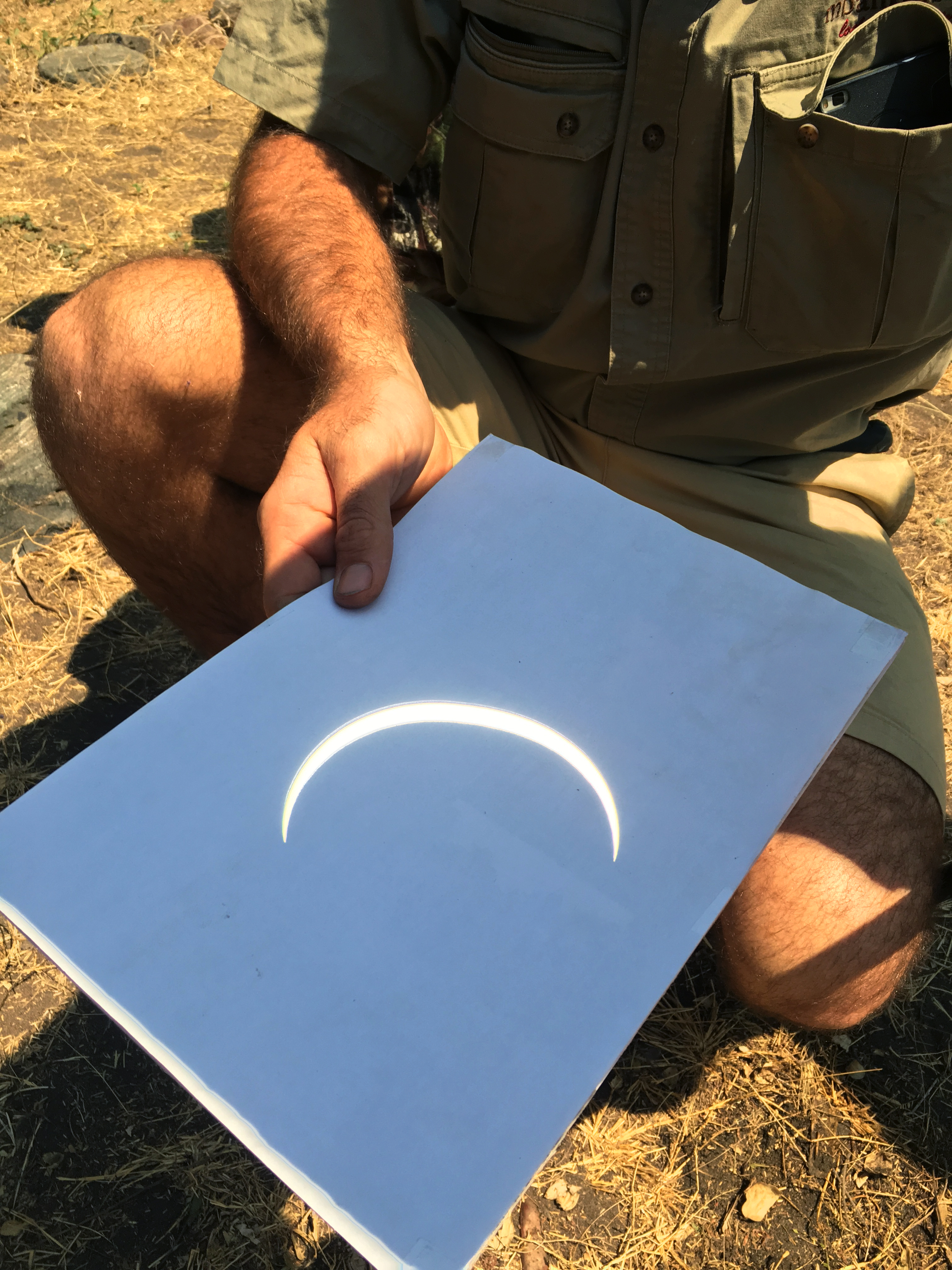What To Do If Your Solar Eclipse Glasses Won't Arrive in Time

If you won't have eclipse glasses in time for the total solar eclipse that will cross the United States on Aug. 21, here are your options for getting them in a hurry or viewing the eclipse another way.
Your local chain
The fastest way to grab eclipse glasses may involve visiting a local store, according to Stephen Ramsden, head of an outreach program called the Charlie Bates Solar Astronomy Project. Many online orders have been delayed, and a last-minute recall by Amazon has created a hurdle for some hopeful eclipse viewers. [How to Tell If Your Eclipse Glasses Are Unsafe (and What to Do About It)]
Several retail chains are selling eclipse glasses and handheld viewers that meet the ISO requirements for safety. According to the American Astronomical Society's (AAS) list of approved vendors, some locations of the following stores carry the glasses:
7-Eleven
Best Buy
Bi-Mart
Casey's General Store
Circle K
HobbyTown
Kirkland's
Kroger
London Drugs
Love's Travel Stops
Lowe's
Maverik
McDonald's (Oregon only)
Pilot/Flying J
Toys R Us
Walmart
According to Ramsden, that may be your only option to purchase glasses at this stage.
"If you waited this long for glasses, your only hope, possibly, is your local retail establishment," he told Space.com.
Local events
In the days leading up to the Great American Solar Eclipse, a number of organizations will open their doors for eclipse-related events. Most will provide eclipse glasses to safely view the event. Contact your local library, museum or observatory to see what it is planning and whether it will provide eclipse glasses. In addition to finding a way to protect your eyes, you might enjoy the organization's program.
Get the Space.com Newsletter
Breaking space news, the latest updates on rocket launches, skywatching events and more!
A different direction
If you can't find eclipse glasses and you've given up on finding them, consider an eclipse-viewing alternative. One of the most widely known options is to build a pinhole projector, which requires only a small shoe-box-size box and a few household items. [Build Your Own Solar Eclipse Viewer]
According to NASA, however, any object with tiny holes can provide a safe way to watch the eclipse, including a colander or a piece of card stock with a hole. Hold the object over the ground or a piece of paper, and look at the projected shadow to create your own simple eclipse viewer. Note that you should look at the shadow of the object on the ground or paper; do not look at the sun through the object.
You can also turn a pair of binoculars into a projector to watch the eclipse safely. That doesn't mean directly looking through the binoculars at the sun, which is definitely unsafe. Instead, combine the binoculars with a tripod (or a stack of books), some duct tape and two pieces of white cardboard to create your own safe solar eclipse viewer. See our video on how to do this here.
Enjoy the eclipse — safely
Hundreds of millions of people will be in range to observe the Aug. 21 event as either a total or partial eclipse, and if they don't use safe viewing methods, the results can be literally blinding. Light from the sun can burn your eyeballs, resulting in permanent damage. So if you want to look directly at the sun, it's critical to use glasses with proper ISO certification, like those from vendors on the AAS list, Ramsden said.
But if you can't find eclipse glasses, and you don't want to make your own viewing equipment, you still won't be out of luck, Ramsden said.
"It's not a time to panic," he said. Based on his experience, Ramsden added, if you visit a city with an eclipse viewing party, people will be more than willing to share.
"There will be hundreds of glasses floating around," he said. "Just go to the event, and share them with someone else."
Follow Nola Taylor Redd at @NolaTRedd, Facebook, or Google+. Follow us at @Spacedotcom, Facebook or Google+. Originally published on Space.com.
Join our Space Forums to keep talking space on the latest missions, night sky and more! And if you have a news tip, correction or comment, let us know at: community@space.com.

Nola Taylor Tillman is a contributing writer for Space.com. She loves all things space and astronomy-related, and enjoys the opportunity to learn more. She has a Bachelor’s degree in English and Astrophysics from Agnes Scott college and served as an intern at Sky & Telescope magazine. In her free time, she homeschools her four children. Follow her on Twitter at @NolaTRedd









